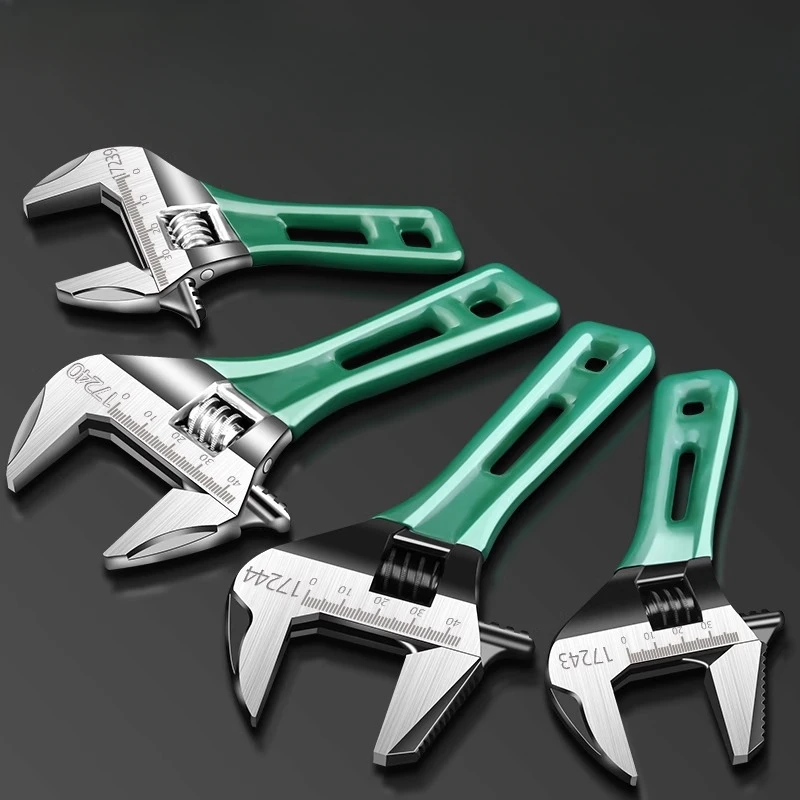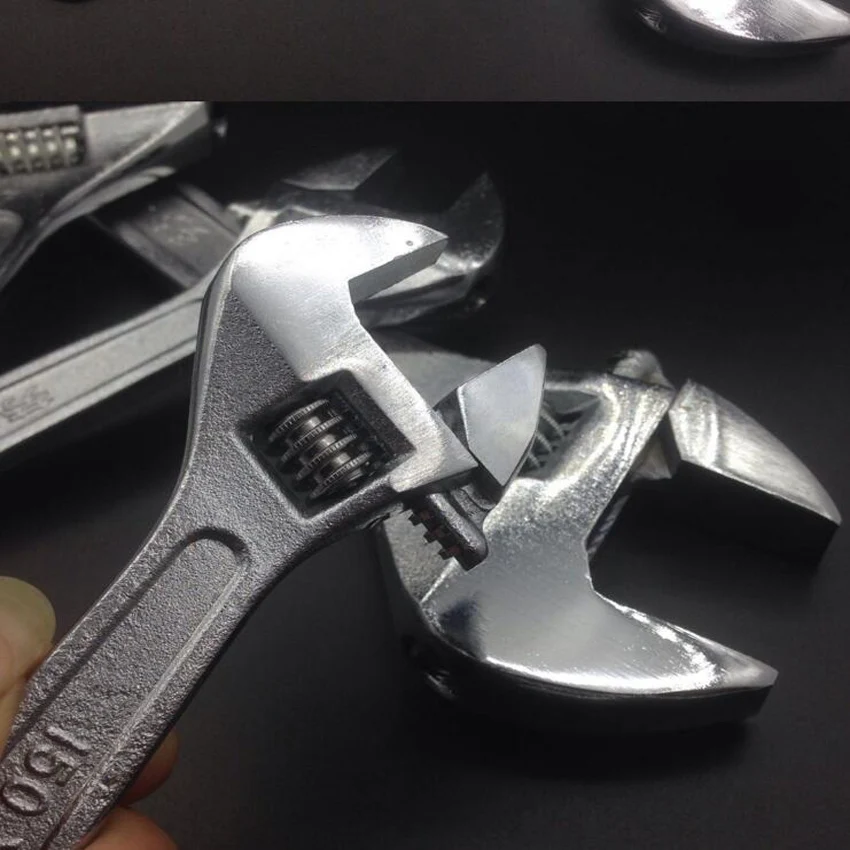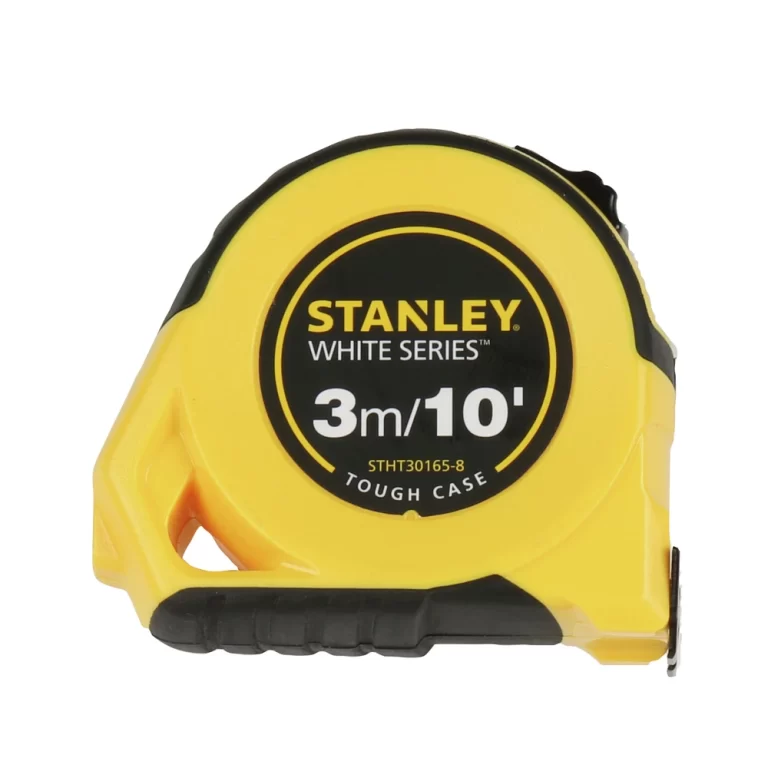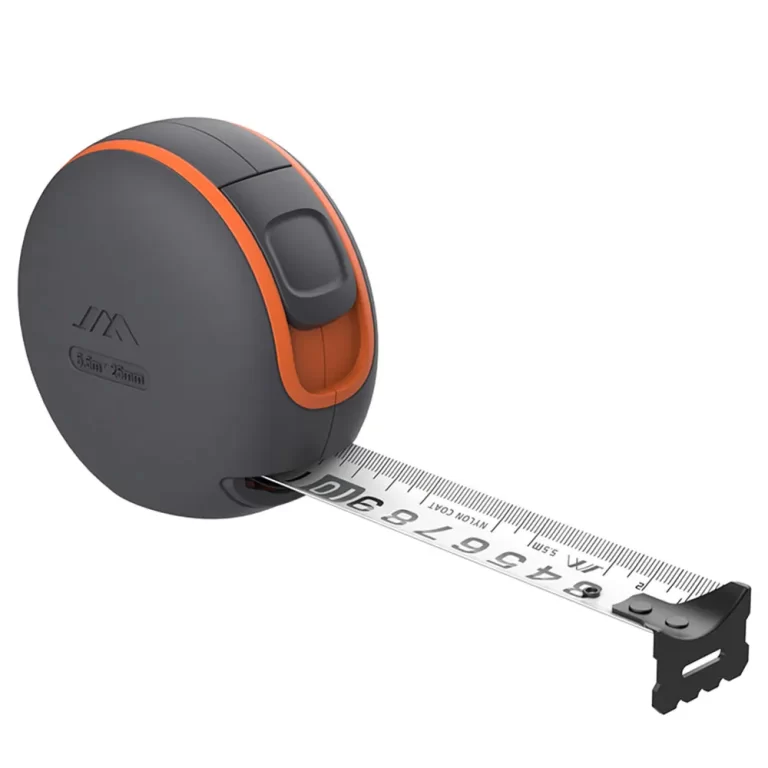
Adjustable Wrench Essentials: Your Complete Guide
If you’ve ever ventured into the world of DIY projects or basic home repairs, you’ve surely encountered the adjustable wrench. This versatile tool is a staple in many toolboxes due to its ability to adapt to various sizes of bolts and nuts. An adjustable wrench provides a convenience that traditional wrenches simply cannot match. Knowing its value and correct usage can vastly improve your efficiency and effectiveness in handling DIY tasks. In this article, we’ll dive into the intricacies of adjustable wrenches, explore different types, discuss proper usage techniques, and provide guidance on maintaining this essential tool.
 The Versatility of the Adjustable Wrench
The Versatility of the Adjustable Wrench
One of the primary advantages of an adjustable wrench lies in its versatility. Unlike fixed-size wrenches, adjustable wrenches have jaws that can be widened or narrowed, allowing them to fit a range of bolt and nut sizes. Thus, when you only have space or budget for a few tools, an adjustable wrench is indispensable.
For instance, this tool is incredibly useful in plumbing jobs. Whether you’re tightening bathroom fittings or attempting to loosen rusted pipes, the adjustable wrench will be your go-to solution. Moreover, because of its adaptability, the same wrench can be used on various components without needing to swap tools constantly.
Beyond plumbing, adjustable wrenches are also invaluable in automotive repairs. From adjusting car parts to fixing bikes, they offer a perfect grip with ease of use. Importantly, adjustable wrenches can help address issues related to both metric and imperial measurements, further demonstrating their flexibility and utility in diverse settings.
History of the Adjustable Wrench
The adjustable wrench, a staple in toolkits worldwide, has a storied past. It emerged in the mid-19th century. Innovators sought a tool that could handle various sizes without the bulk of carrying an entire set. The solution was the adjustable wrench, known for its versatility.
The initial design featured a worm screw for adjusting the jaw width, allowing a single wrench to service multiple fasteners. As patents filed and designs refined, the adjustable mechanism improved. This tool gained widespread acceptance in both professional and domestic settings.
Through the industrial revolution, the adjustable wrench became an essential tool for assembly lines and machinery repairs. Its simple concept – a moveable jaw controlled by a screw mechanism – has endured with few fundamental changes. Over time, the materials have evolved, from early iron models to today’s durable steel alloys.
Johan Petter Johansson, a Swedish inventor, claimed a significant advancement in its design in 1892. His enhancement allowed the wrench to adjust quickly, promoting its utility and popularity. The term ‘monkey wrench’ sometimes used for these tools, however, is a misnomer and not synonymous with the adjustable wrench.
Today’s adjustable wrenches reflect a century of innovation. They remain invaluable to trades like plumbing, automotive repair, and construction. As we delve further into the history of this remarkable tool, we appreciate the ingenuity that has made it an enduring addition to our toolboxes.
 Types of Adjustable Wrenches
Types of Adjustable Wrenches
There are several types of adjustable wrenches, each suited for specific tasks. Here is a rundown of the most common variations:
- Crescent Wrench: Named for its crescent-shaped jaw, this wrench is the most widespread. It features a sliding jaw adjusted with a thumbwheel.
- Pipe Wrench: While not a traditional adjustable wrench, its serrated jaw adjusts to grip and turn pipes.
- Monkey Wrench: This term often misapplied to adjustable wrenches refers to an older style wrench with a straight handle and a large, flat jaw.
- Auto Wrench: This version automatically adjusts to the size of the nut or bolt with a spring-loaded mechanism making it easier for quick tasks.
- Slip-Nut Wrench: Primarily used for plumbing, this tool features a jaw that is adjusted by a swivel mechanism.
Understanding the variety of adjustable wrenches can help you choose the right one for the job. Remember to consider the specific task you need the wrench for when making your selection. Selecting the right type ensures an efficient and effective task performance. Keep in mind that the keyword ‘adjustable wrench’ applies broadly to any wrench with an adjustable mechanism, although they come in different shapes and applications.
How to Choose the Right Wrench
Choosing the right adjustable wrench is key to a good job. Here are steps to help you pick:
- Identify the Task: What will you use the wrench for? Always match the wrench to the task.
- Consider the Size Range: Make sure the wrench can handle the range of sizes you need. Smaller wrenches work for tight spaces, larger ones offer more leverage.
- Jaw Capacity: Look for a wrench where the jaws can open wide enough for your needs. This is vital for larger nuts or bolts.
- Handle Length: Longer handles give more torque but can be bulky. Short handles fit tight spots. Choose based on where you’ll work.
- Material Quality: High-grade steel alloy wrenches last longer and withstand tough use. Don’t compromise on quality.
- Ease of Adjustment: Can you adjust the wrench smoothly? This makes for quicker and more accurate work.
- Additional Features: Some wrenches offer extra features like scales for measurement or tension springs. These might enhance your working experience.
Ensure you check these key points when selecting your adjustable wrench. A well-chosen tool will improve your efficiency and effectiveness on the job. Remember, the right adjustable wrench is a crucial partner in any mechanical task you undertake.
 Key Features to Look for
Key Features to Look for
When shopping for an adjustable wrench, several key features are essential for optimal performance. These features enhance the tool’s utility and ensure longevity. Here’s what you should look for:
- Adjustability: The primary feature of an adjustable wrench is its adjustability. Look for a smooth adjustment mechanism that allows for quick and precise jaw sizing.
- Jaw Capacity: Check the maximum and minimum jaw capacity to ensure it fits the range of work you plan to do. A larger range offers more versatility.
- Material Strength: Wrenches made from chrome vanadium or forged carbon steel provide durability and resistance to wear and tear.
- Handle Comfort: A wrench with an ergonomic handle improves grip and reduces hand fatigue. This is especially important for jobs that require prolonged use.
- Calibrated Scale: Some adjustable wrenches come with a scale on the jaw for easy measurement and accurate work.
- Corrosion Resistance: Pick a wrench with a rust-resistant finish such as chromium plating. It will maintain its integrity through harsh environments.
- Reliable Brand: Often, a reputable brand means a commitment to quality. Research brands known for their reliable tools.
- Warranty: A product warranty gives you peace of mind, signifying the manufacturer’s confidence in their tools’ performance and durability.
Spotting these features when selecting an adjustable wrench will guide you to a tool that’s ready for any job. Always remember, the right adjustable wrench is pivotal to job success.
Maintenance and Care
Proper maintenance and storage are crucial for the longevity of your adjustable wrench. Ensuring your tool is in good condition not only extends its life but also keeps it safe and reliable for use. Here are some straightforward tips on keeping your adjustable wrench in top shape:
- Regular Cleaning: Wipe your wrench after every use. This removes dirt, oil, and debris that can affect its function.
- Lubrication: Apply a light oil to the moving parts periodically. This keeps the adjustment mechanism smooth and prevents rust.
- Proper Storage: Store your adjustable wrench in a dry place. Moist environments can lead to corrosion and damage.
- Inspection: Before use, inspect your wrench for wear and damage. Look for cracks in the handle or issues with the jaw mechanism.
- Avoid Overloading: Do not use your wrench beyond its capacity. Excessive force can damage the tool and cause slippage.
- Corrosion Check: Look out for signs of rust. If spotted, clean with a rust remover and apply protective oil.
- Handle with Care: Dropping your wrench can damage the tool and cause calibration issues. Always handle it with care.
By following these care instructions, your adjustable wrench will remain a reliable and essential tool in your kit. Remember, a well-maintained adjustable wrench is a more effective and safer tool to work with.
 Common Uses
Common Uses
Adjustable wrenches are incredibly versatile tools. You’ll find them in nearly every toolbox because they’re essential for a wide range of tasks. They shine in situations where various nut and bolt sizes are involved. Here are some common uses for this indispensable tool:
- General Home Repairs: Handy for tightening or loosening fasteners in furniture assembly or appliance fixes.
- Plumbing Jobs: Perfect for gripping and turning pipes or fittings with different diameters.
- Automotive Repairs: Crucial for adjusting nuts and bolts under the hood or elsewhere on a vehicle.
- Bike Maintenance: Helps in adjusting seat heights, handlebars, and other components quickly.
- Electrical Work: Useful for securing cable clamps and supporting brackets when wiring.
- Construction Projects: Aids in fastening metal frameworks and setting up scaffoldings.
- DIY Projects: Assists in building and modifying personal projects where adjustability is a bonus.
Keep the adjustable wrench close for repairs, building, or maintenance that calls for adapting to different sizes. By using an adjustable wrench, you save time and space without changing tools for each fastener size. Remember, the ‘adjustable wrench’ keyword is not just for the tool, but it also stands for a handy solution adaptable to numerous scenarios.
Tips for Using an Wrench Effectively
To get the best out of your adjustable wrench, follow these tips for effective use:
- Align the Jaws Correctly: Make sure the wrench jaws sit flat against the sides of the fastener. This ensures a firm grip.
- Apply Even Pressure: Turn the handle with steady, even pressure to prevent slipping and rounding off edges.
- Adjust As Needed: If the wrench begins to slip, stop and readjust the jaw to fit the fastener snugly before continuing.
- Hold It Near the Base: Grip the wrench near the base of the handle for maximum leverage and control.
- Turn Slowly: Especially with rusted or stiff fasteners, turn the wrench slowly to apply gradual force.
- No Extension Bars: Don’t use pipes or extension bars to increase leverage. This can overload the wrench.
- Keep It Clean: Before and after use, make sure the wrench is free from grease and oil to maintain a good grip.
Utilizing your adjustable wrench with these methods will help ensure efficient, safe work, and maintain the wrench’s condition.
Safety Precautions
Safety should always be a top priority when working with any tool, including the adjustable wrench. By taking the right precautions, you can minimize the risk of injury and ensure a safe working environment. Here are essential safety tips to follow:
- Wear Protective Gear: Always wear safety glasses to protect your eyes from flying debris. Gloves can also shield your hands during heavy-duty work.
- Inspect Your Tools: Before use, check your adjustable wrench for damage or wear. A compromised tool can fail and cause injury.
- Use the Right Size: Make sure your wrench fits the fastener snugly. A wrench that’s too large may slip, while one that’s too small can damage the fastener.
- Keep Your Workspace Clean: A clear work area helps prevent tripping or losing balance while holding the wrench.
- Avoid Power Lines: When working near electrical sources, be cautious. An adjustable wrench can conduct electricity, posing a serious risk.
- Don’t Overextend: Apply force sensibly. Pushing too hard can break the wrench or the fastener, leading to accidents.
- Store Properly: When not in use, place your wrench in a secure spot to avoid it falling and causing injury or damage.
Following these safety practices will help to avoid common hazards while working with an adjustable wrench. Always remember, taking a moment for safety can prevent a lifetime of regret.
 Conclusion
Conclusion
In conclusion, the adjustable wrench serves as a cornerstone of toolkits worldwide. Its versatility, efficiency, and adaptability make it invaluable for a multitude of tasks. Whether in plumbing, automotive projects, or general repairs, this tool remains fundamental. From understanding its types and usage to recognizing the importance of maintenance and safety, comprehensive knowledge ensures you’re equipped to utilize the adjustable wrench effectively.
Furthermore, by selecting a high-quality product tailored to your needs, you’ll find the adjustable wrench to be a seamless addition to your toolbox. Ultimately, the adjustable wrench is not just a tool but a symbol of practical ingenuity. Its continued evolution and impact solidify its place as a vital asset for all repair enthusiasts. Embrace its potential, and you will surely realize the extensive benefits it offers. When the adjustable wrench is your ally, fixing, adjusting, or building becomes an effortless journey of excellence.

